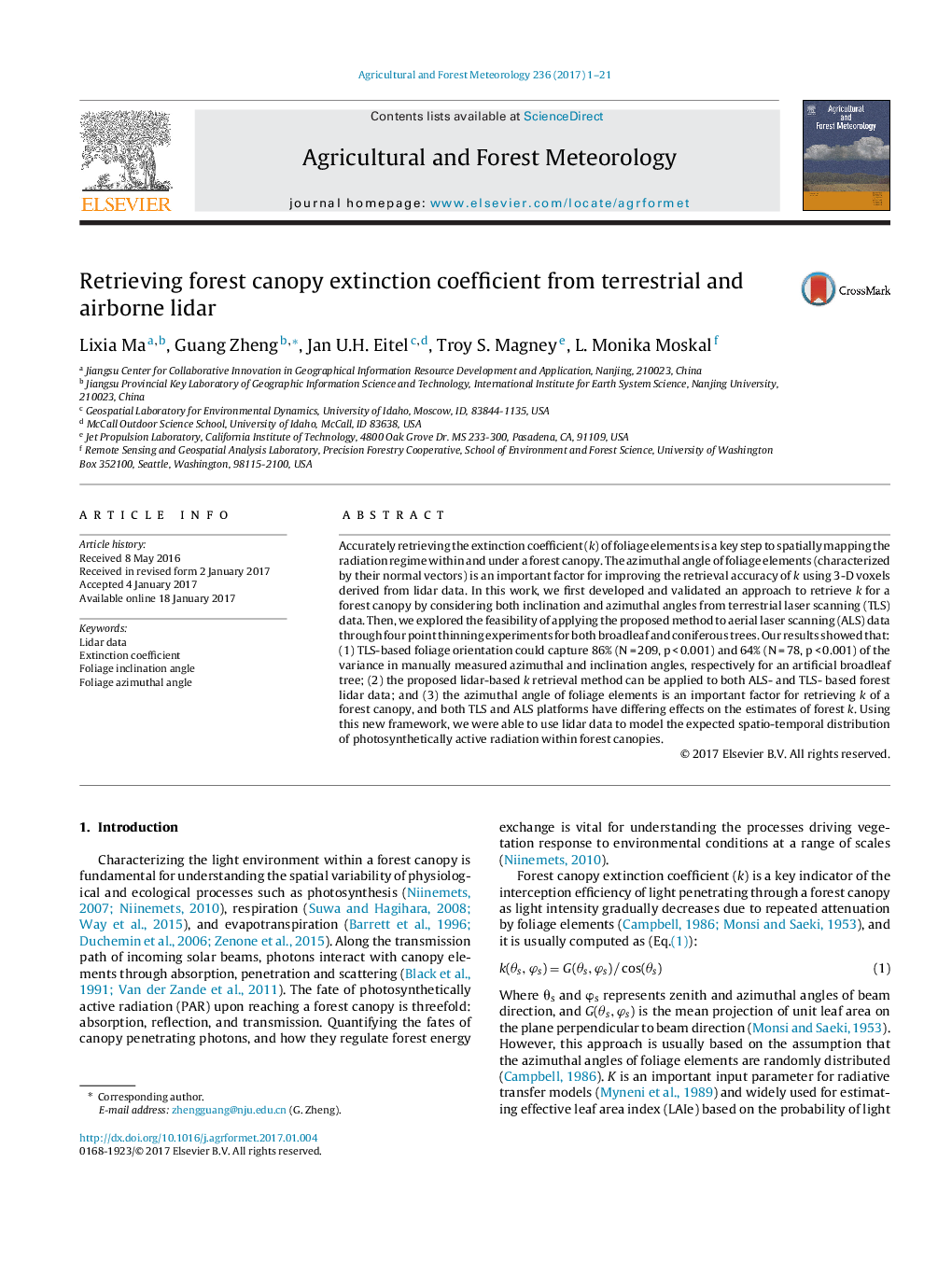| Article ID | Journal | Published Year | Pages | File Type |
|---|---|---|---|---|
| 6458023 | Agricultural and Forest Meteorology | 2017 | 21 Pages |
â¢The azimuthal and inclination angle distributions of foliage elements were retrieved from the 3-D forest point cloud data and validated.â¢An approach to retrieve the forest canopy extinction coefficient was numerically developed.â¢The effects of laser scanning ways and point density on extinction coefficient had been investigated.
Accurately retrieving the extinction coefficient (k) of foliage elements is a key step to spatially mapping the radiation regime within and under a forest canopy. The azimuthal angle of foliage elements (characterized by their normal vectors) is an important factor for improving the retrieval accuracy of k using 3-D voxels derived from lidar data. In this work, we first developed and validated an approach to retrieve k for a forest canopy by considering both inclination and azimuthal angles from terrestrial laser scanning (TLS) data. Then, we explored the feasibility of applying the proposed method to aerial laser scanning (ALS) data through four point thinning experiments for both broadleaf and coniferous trees. Our results showed that: (1) TLS-based foliage orientation could capture 86% (N = 209, p < 0.001) and 64% (N = 78, p < 0.001) of the variance in manually measured azimuthal and inclination angles, respectively for an artificial broadleaf tree; (2) the proposed lidar-based k retrieval method can be applied to both ALS- and TLS- based forest lidar data; and (3) the azimuthal angle of foliage elements is an important factor for retrieving k of a forest canopy, and both TLS and ALS platforms have differing effects on the estimates of forest k. Using this new framework, we were able to use lidar data to model the expected spatio-temporal distribution of photosynthetically active radiation within forest canopies.
